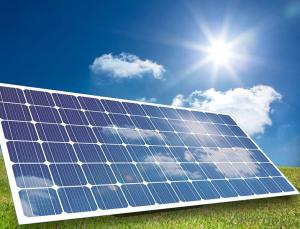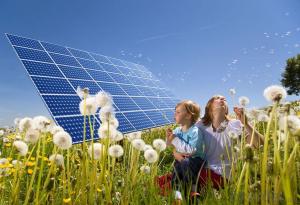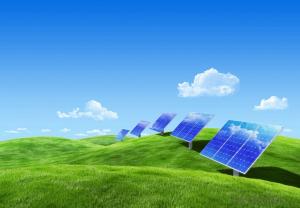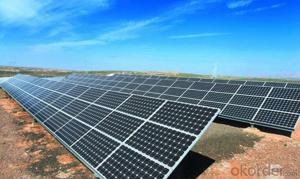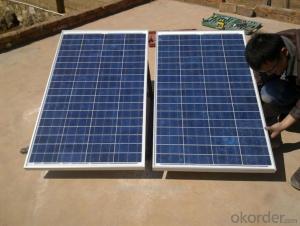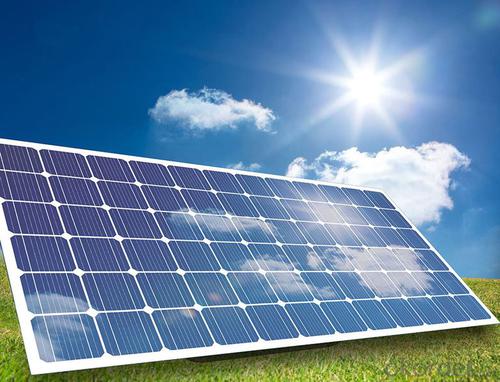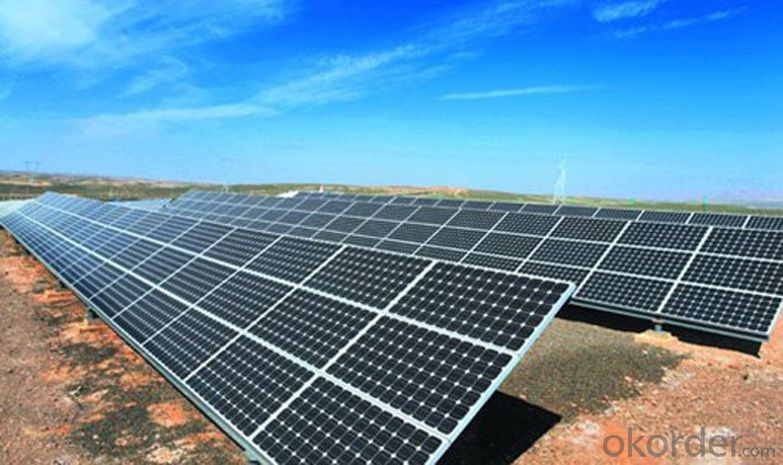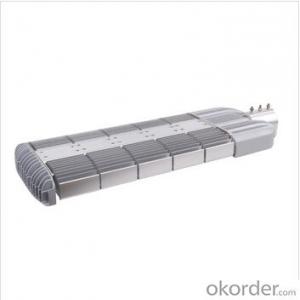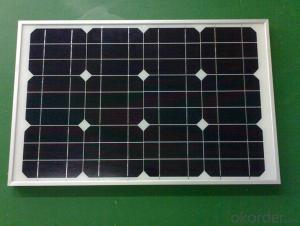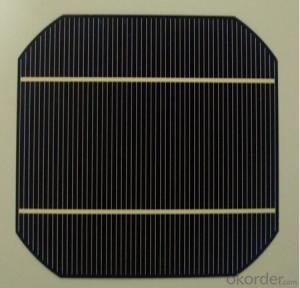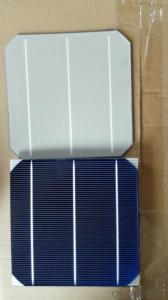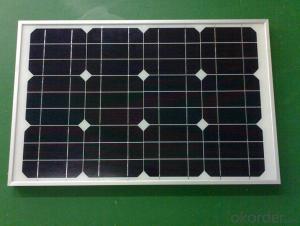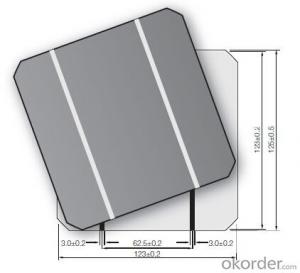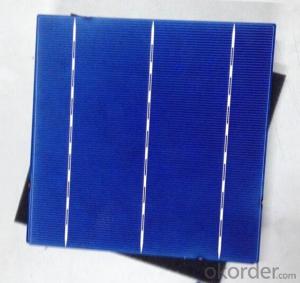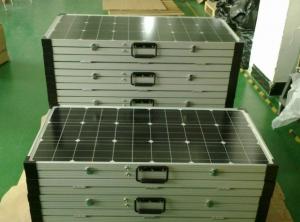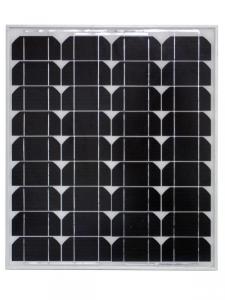156mm Solar Cells Photovoltaic Product for Churches - Solar Panels
- Loading Port:
- Shanghai
- Payment Terms:
- TT OR LC
- Min Order Qty:
- 7875 watt
- Supply Capability:
- 10000000 watt/month
OKorder Service Pledge
OKorder Financial Service
You Might Also Like
Specification
Solar Module Summarize
Solar Module is the core part of solar PV power systems, also is the highest value part of it. The function of Solar Module is to convert the sun's radiation to electrical energy, or transfer it to battery and store in it, or to drive the load running.
The Product has been widely used in space and ground, it mainly used for power generation systems, charging systems, road lighting and traffic signs areas. It could offer a wide range of power and voltage, and with high conversion efficiency, and long service life.
Technical Parameter:
Model Type | Good Quality 250W Solar Panel |
Peak Power-Pmax(W) | 250W |
Open Circuit Voltage-Voc(V) | 44.2 |
Maximum Power Voltage-Vmp(V) | 36 |
Short Circuit Current-Isc(A) | 5.4 |
Maximum Power Current-Imp(A) | 5 |
Maximum System Voltage | 1000V DC |
Maximum Series Fuse Rating | 10A |
Power Tolerance | -1~+3% |
Temperature Coefficients of Pmax | -0.45%/℃ |
Temperature Coefficients of Voc | -0.348%/℃ |
Temperature Coefficients of Isc | 0.031%/℃ |
Nominal Operating Cell Temperature | 44.5±2℃ |
Standard Testing Condition(STC) | Irradiance:1000W/m²;Temperature:25℃;AM=1.5 |
Qualification Test Parameters | |
Operating Temperature | -40℃~+85℃ |
Storage Temperature | -40℃~+85℃ |
Pressure Bearing | ≥5400Pascal/m² |
Wind Bearing | ≥5400Pascal/m² |
Mechanical Characteristics | |
Cell Size | Poly 156*156mm±0.5 |
No.of Cells | 60pcs(6*10) |
Dimension | 1640*992*40mm |
Weight | 18.8Kg |
Glass | 3.2mm High Transmission,Low Iron |
Frame | Anodized Aluminum Alloy |
Junction Box | IP65Rated |
Internal Diodes | 3 Bypass Diodes |
Cable | 1*4.0mm² Length 900mm |
Product Show:
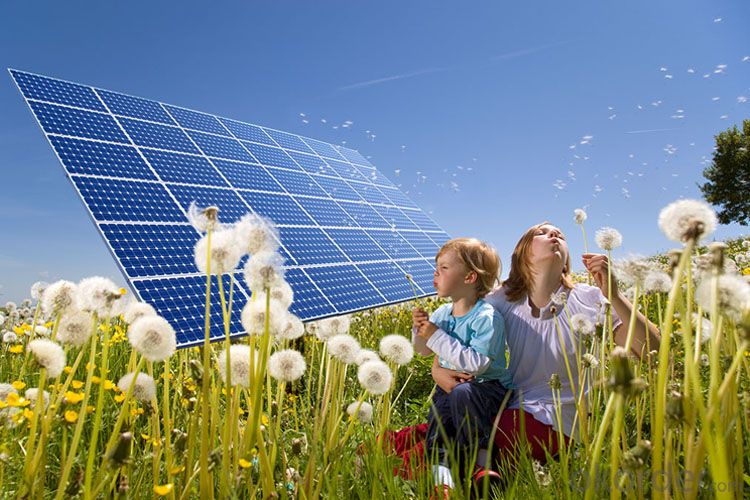
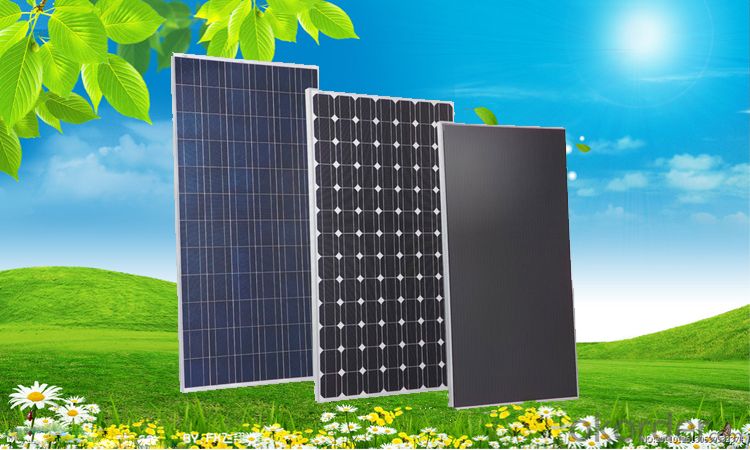
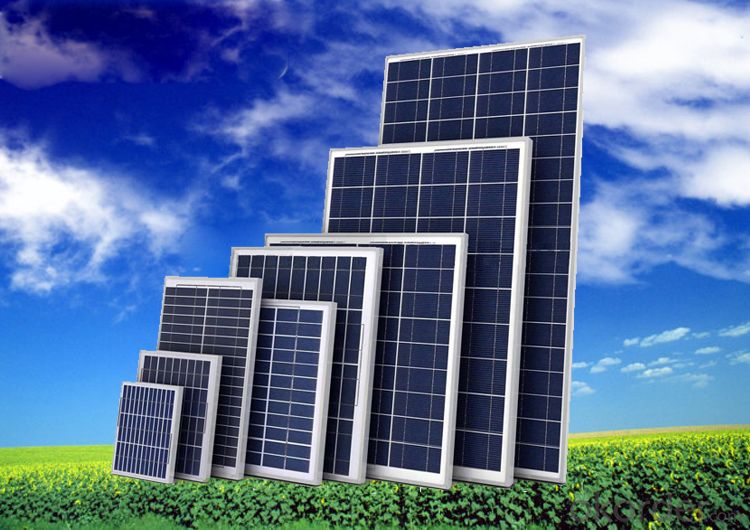
Packing & Shipping:
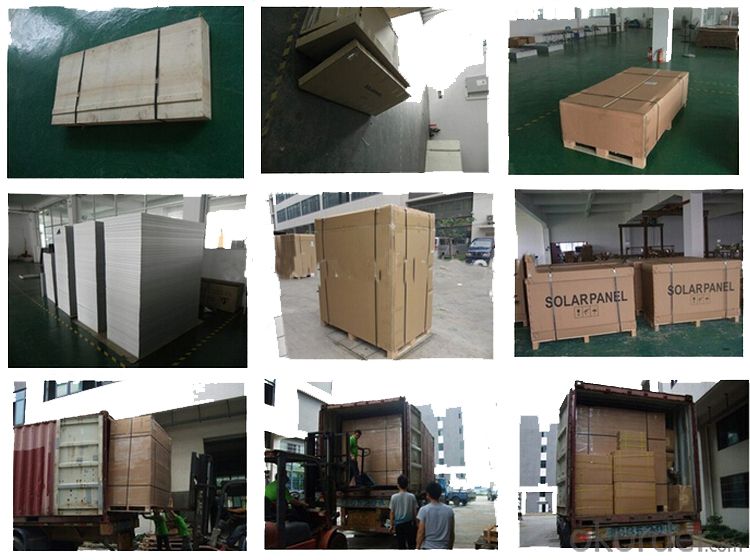
We have rich experience on how to pack the panels to make sure the safety on shipment when it arrives at the destination.
The normal size is packed by 25pcs/ carton / pallet. Paper carton for FCL shipping and wood carton for LCL shipping.
Company Description
CNBM International Corporation, as an important external business platform of CNBM Group, plays as a role to export solar products produced by CNBM. Headquartered in Beijing, We have entered into Solar PV industry since 2005. CNBM Solar is specialized in PV power systems which takes advantage of reliable supplying, convenient installation and free maintenance, and has been used widely, and it is the compensation and substitution of normal power supply. We provide power solutions for home, business and industrial customers, and provide off-grid PV systems for rural area. Our company not only can supply high quality solar Products, but also provides professional system Solutions and high quality services.
FAQ:
(1)What price for each watt?
It depends on the quantity, delivery date and payment terms.
(2)What is your size for each module? Can you tell me the Parameter of your module?
We have different series of panels in different output, both c-Si and a-Si. Please take the specification sheet for your reference.
(3)Can you provide the peripheral products of the solar panels, such as the battery, controller, and inverter? If so, can you tell me how do they match each other?
Actually we are only manufacturer of solar panels, but we could try to source them for you in China if you need. We could provide you an optimal system design to instruct you how to install.
(4)Do you have the CE, TUV, UL Certification?
We’ve already passed all the tests, and any certificate is available.
- Q: Hi, i want to please a solar panel in Lima Peru, my Latitude is -2 and longitude -77. I understand that since i am in the southern hemisphere, my panel should be pointing north. However, i am using a program called pvdesigner, and according to this, y should face my panel with and azimuth of 00degrees (0 = south) and a tilt of 60degrees. Does this make any sense?thanks
- Typically, solar panels are installed facing the same as your latitude = 2 degrees to the North measured from horizontal. 60 degrees from vertical = 30 degrees from horzontal will give almost as much power in June as in December = beginning of Summer. You can face your panels straight up = zero tilt from vertical = better for December/ not so good in June. Usually, the same tilt as your North facing roof is best as it simplifies installation and reduces wind loading. Shade from trees etc will much reduce the power you get. Neil
- Q: Can solar panels be used in areas prone to hurricanes or earthquakes?
- Yes, solar panels can be used in areas prone to hurricanes or earthquakes. While these natural disasters can pose risks to solar panels, proper installation and structural reinforcement can ensure their resilience. Additionally, advancements in technology have led to the development of more robust solar panels that can withstand extreme weather conditions. However, it is important to consider local regulations, building codes, and additional safety measures to mitigate potential risks.
- Q: my pool guy cleaned the filter and replaced the DE, but now my roof solar panels have started leaking. how do i stop the leak? does backwashing help in any way?
- If you do not isolate the solar system when backwashing your filter, you WILL pump DE into the panels and plug them and destroy them. At this point you may have to disconnect the panels, wash them from the RETURN SIDE (from the higher pipe and HOPE that the DE will flow out of the panels... most likely your pool guy just screwed up your solar real good... if the DE is plugging your panels, when winter comes your panels will split because they are holding water and the freezing water will split them... I hope your pool guy has insurance
- Q: What is the efficiency of solar panels?
- The efficiency of solar panels refers to their ability to convert sunlight into usable electricity. The efficiency can vary depending on the type and quality of the panels, but most modern solar panels have an efficiency of around 15% to 20%. However, advancements in technology have led to the development of highly efficient panels that can achieve efficiencies of up to 40%.
- Q: Okay so.. if light deflect the light of the sun and black absorbs it, then aren't solar panels just absorbing more light, sun and heat into our atmosphere? Wouldn't this lead to an increase in global warming? Shouldn't solar panals be white? No rude answers please.
- There are two basic types of solar panels. ) Thermal absorbers 2) Photovoltaics Thermal absorbers are black in order to convert sunlight to thermal (heat) energy. The whole idea is to capture all of the light with a dark surface, convert it to thermal energy and transfer the energy into your home for water heating or space heating. If you make the surface white or reflective, then the surface will absorb only a small fraction of the available light, hence the efficiency will be very low. In other words, the panel will not produce any heat. Photovoltaic panels produce electricity instead of heat energy. Photovoltaic panels are made from thin slices (“waffers”) of silicon with special coatings on the front and back surface. One of these coatings on the front is an antireflection coating to capture the light and channel it toward the silicon. Underneath the antireflection coating the silicon waffer is coated with other chemicals that convert the sunlight to electricity. The combination of these coatings gives the panel a dark color, usually blue or black. Here's the bottom line. If you want thermal heat or electricity from solar panels, the panels have to capture the light. When that light is captured, the surface appears dark because no light (or very little) light is reflected back to our eyes. It is not possible for a surface to be an efficient absorber, capturing all available light, and at the same time appear white or bright color or reflective to our eyes.
- Q: Can solar panels be installed on metal roofs?
- Yes, solar panels can be installed on metal roofs. In fact, metal roofs are often a great choice for solar panel installations due to their durability and long lifespan. Additionally, the smooth surface of metal roofs makes it easier to secure and position the panels, maximizing sunlight exposure and energy generation.
- Q: How can I know the right type of solar panel to choose for my small village house in Africa?
- The power output of a solar panel uses a formula to determine kilowatts produced per hour per square meter per day. This calculation is important because, if you plan to install a solar power system for your home, you will want to know how many solar panels will be needed. To calculate solar power requirements correctly, you need to gather the data that is needed for the calculation. First you have to find the average amount of solar radiation available for your area. You can use a solar radiation chart. This can range from a 4 to a 7 depending on the area you live in. Write the number down on a piece of paper and indicate it with the letters RA. Next is determine the amount of electricity that you use daily. Add the kilowatt-hours used per month from your utility bill. Multiply this number by ,000 to get the watt hours in a month. Divide the total by 30 for the amount of electricity you use daily. Write this number down and indicate it with the letters DE. Determine the percentage of your home that you want to power with the solar power system. Write this number down and indicate it with the letter P. Determine the system inefficiency factor for the solar power system. You should be able to find this on the brochure for the system or from the manufacturer's web site. Write this number down and indicate it by the letter I. Determine the power or yield that is required for your home. Use the equation P = I x (DE x P) / RA to find the power requirements in kWh. Divide the number from Step 5 by the peak wattage for a single solar panel to determine the number of panels you will need for your home. Goodluck! :)
- Q: I have some property off the grid and am looking to add solar power
- there are a large style of image voltaic panels accessible as we talk's. the project of the performance is the proccess of replacing, those cells use the photons of the solar to react with the ( Si compound contained in the cellular) because of the little ingredient that cellular's are literally a fragment of those capacity is switched over, undergo in recommendations that image voltaic cells are paper skinny and the rather situation of those cells are the voltage no longer the amps. A unmarried 3x6 inches image voltaic cells can produce 3.6 amps yet actually 0.5 volts.
- Q: What is the cost of installing solar panels?
- The cost of installing solar panels can vary depending on various factors such as the size of the installation, location, type of panels, and additional equipment needed. On average, a residential solar panel system can cost anywhere between $10,000 to $30,000 or more. However, it's important to note that there may be potential tax incentives, rebates, and financing options available, which can help offset the upfront costs and make solar panel installations more affordable.
- Q: I was having a discussion with a friends about solar panels.He says that if there is a solar panel (sp) on the ground and a solar panel (sp2) high in the atmosphere (in the stratosphere) the difference in power output between sp and sp2 negligible. I said that there would be a large difference in power output because sp has all of the atmosphere to block the suns rays and sp2 has very little atmosphere because it is very high up (in the stratosphere) therefore more sun can get to the panel and more power is produced.who is correct? many thanks in advance, please leave sources if possible, for validity.
- There will be a difference (44%, see below) but not a large one. The atmosphere is transparent to the wavelengths used by the solar panel. But no clouds, and a lot more hours of sunlight. wikipedia: Space-based solar power (SBSP) (or historically space solar power- SSP) is a system for the collection of solar power in space, for use on Earth. SBSP differs from the usual method of solar power collection in that the solar panels used to collect the energy would reside on a satellite in orbit, often referred to as a solar power satellite (SPS), rather than on Earth's surface. In space, collection of the Sun's energy is unaffected by the day/night cycle, weather, seasons, or the filtering effect of Earth's atmospheric gases.
Send your message to us
156mm Solar Cells Photovoltaic Product for Churches - Solar Panels
- Loading Port:
- Shanghai
- Payment Terms:
- TT OR LC
- Min Order Qty:
- 7875 watt
- Supply Capability:
- 10000000 watt/month
OKorder Service Pledge
OKorder Financial Service
Similar products
Hot products
Hot Searches
Related keywords
